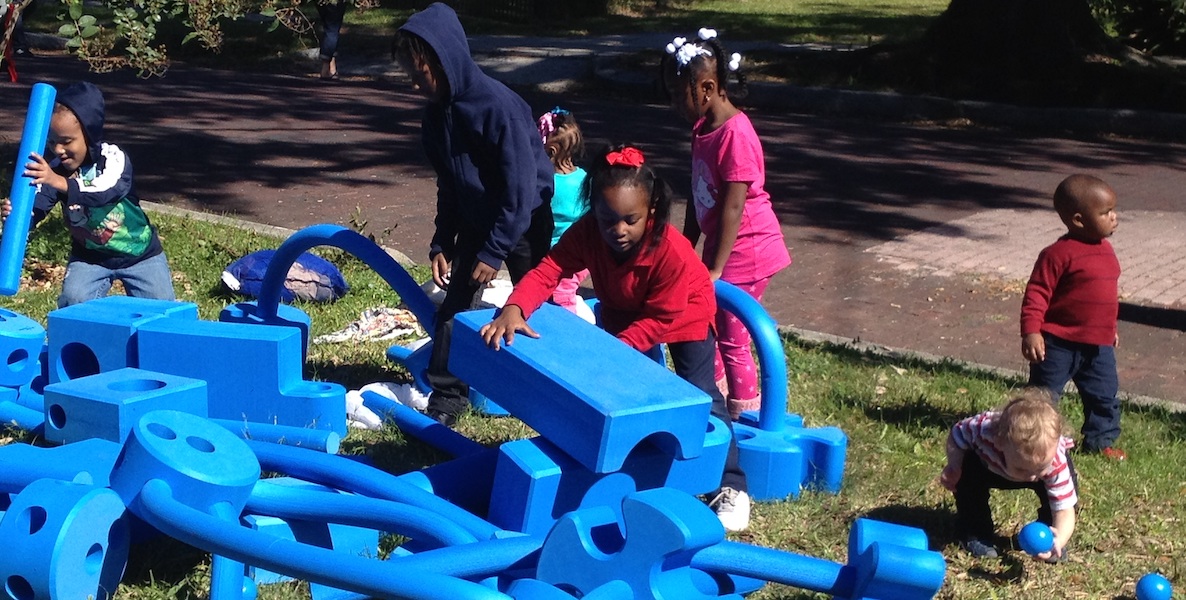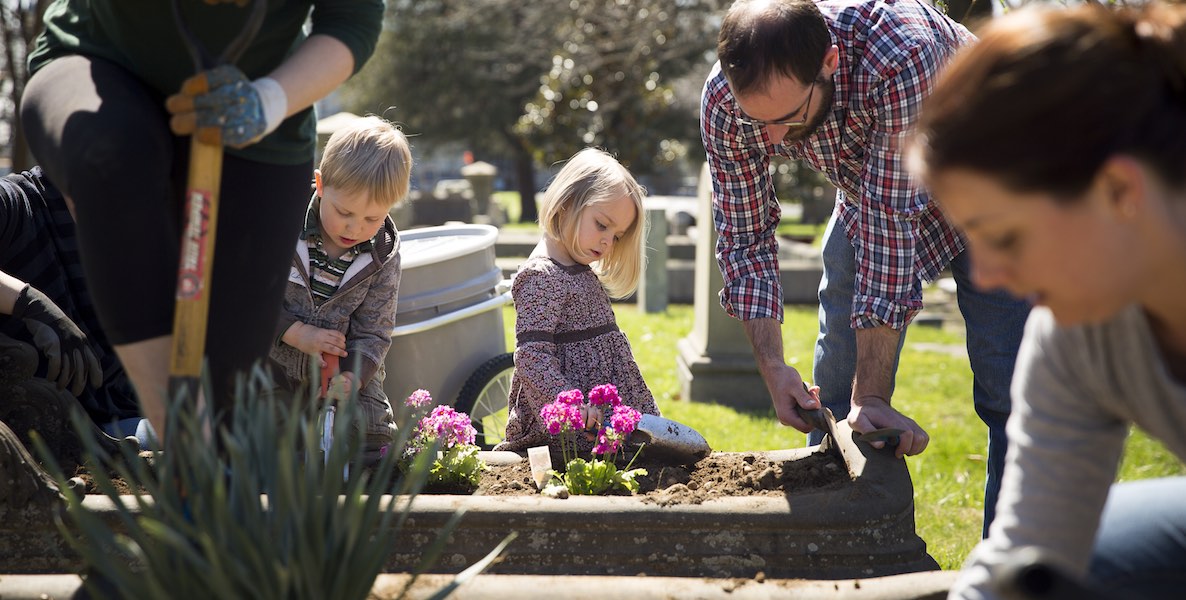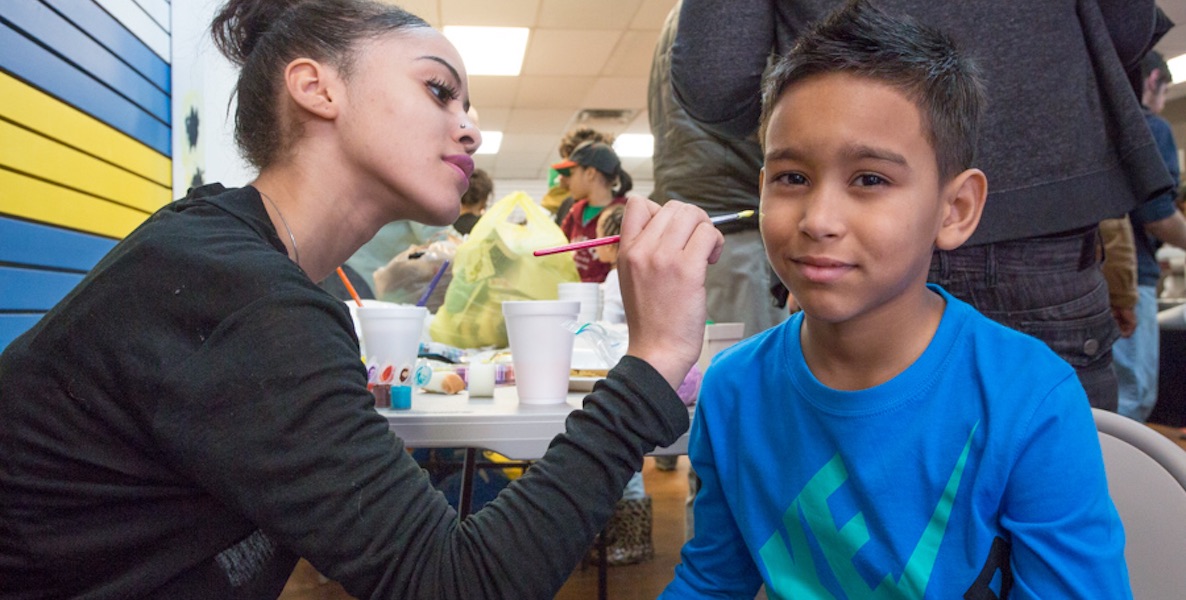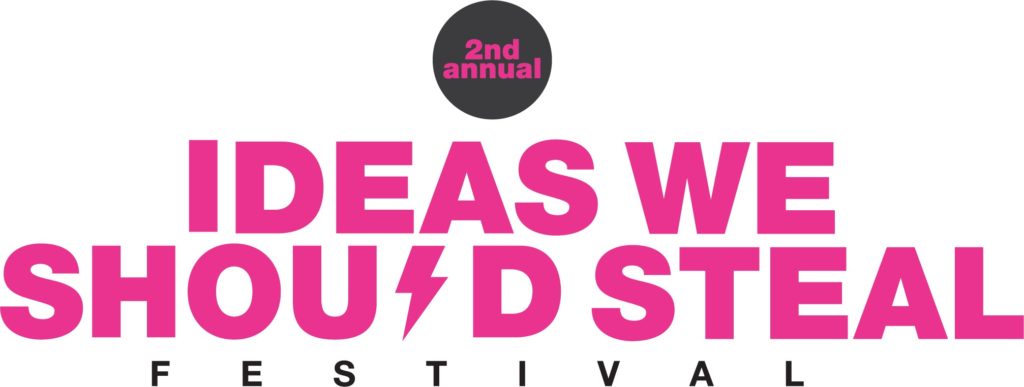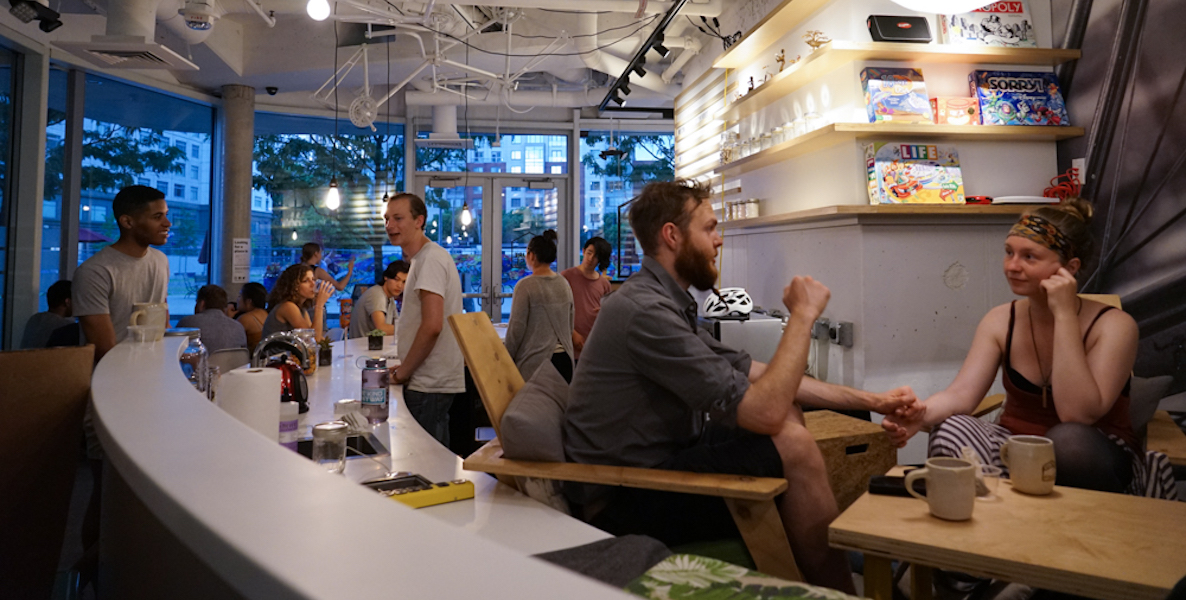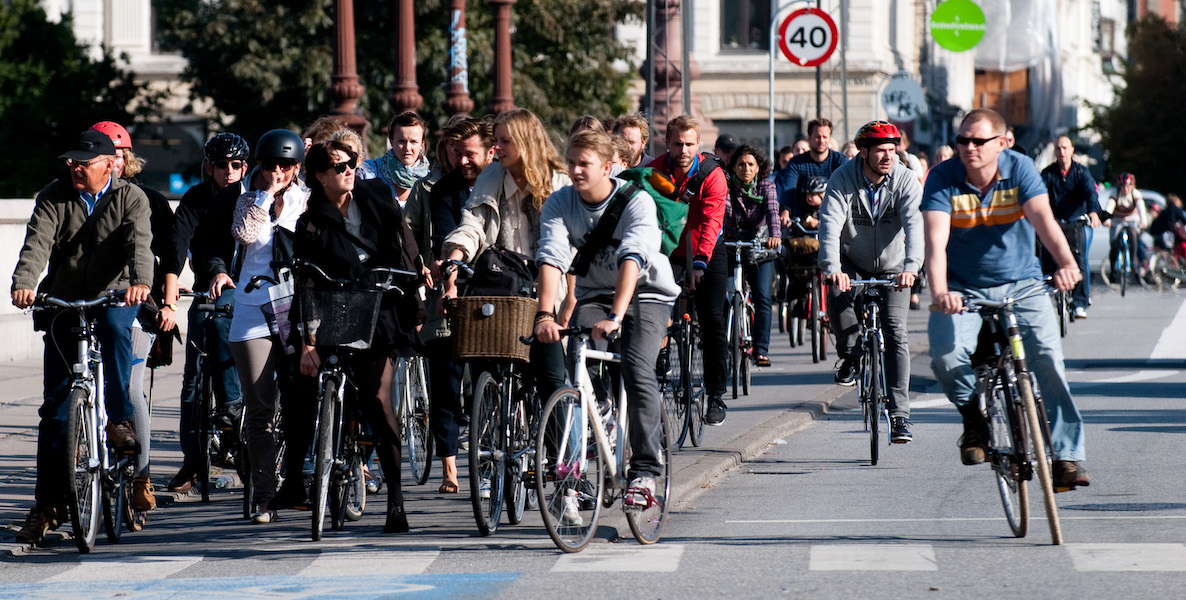When you first walk past CultureHouse in the Kendall Square neighborhood of Cambridge, you might think it’s just one of a plethora of coffee shops in the city, a café like any other.
![]() The coffee and tea here, though, are free, and there are no to-go cups in sight—you’ll have to stick around to get your caffeine fix.
The coffee and tea here, though, are free, and there are no to-go cups in sight—you’ll have to stick around to get your caffeine fix.
That’s because CultureHouse isn’t a coffee shop. It’s a free public space, brought indoors. It’s a “living room for the community,” a public park inside, a place to connect with your neighbors or friends or colleagues or family without having to buy a beer or a coffee or a meal. It’s open Wednesday through Sunday, and is always staffed by a CultureHouse employee or volunteer.
Virtually any day of the week, you can stop by to participate in an endless rotation of programming, most of which is free: DIY spa days, bike repair workshops, lecture series, movie nights, live music and community potluck dinners among them.
It opened in the storefront it inhabits on July 1, 2019, and it will be there only through March. A CultureHouse in Harvard Square in Cambridge will open in December and exist through late spring, and one ran for just a month in summer 2018 at Bow Market in Union Square, Somerville, a city just adjacent to Cambridge.
![]() They all occupied, occupy, or will occupy formerly vacant spaces. The organization has also hosted several outdoor, short-term pop-ups in both Boston and surrounding cities.
They all occupied, occupy, or will occupy formerly vacant spaces. The organization has also hosted several outdoor, short-term pop-ups in both Boston and surrounding cities.
Aaron Greiner, the founder and director of nonprofit CultureHouse, is well aware that the idea can be tough for people to wrap their heads around: a storefront where nothing is for sale and no services are offered? A community space where there are no basketball nets?
“Philly as a city of neighborhoods can really take a model like this and replicate it across the city,” Johnston-Zimmerman says. “If you’re really thinking about local change and culture, why not have these in a host of neighborhoods across the city that are really community-led and can be a hub of thinking about change?”
Visitors quickly understand the value, though, once they spend some time inside. “People come in and say, ‘I needed a space like this, I just never knew it could exist,’” Greiner says.
This idea—of a space you just never knew could exist, in a neighborhood you likely know well—has caught the attention of two locals who may soon open a CultureHouse here in Philadelphia: Katrina Johnston-Zimmerman and Job Itzkowitz, who have known each other for several years, but reached out separately to Greiner about bringing his idea here.
Johnston-Zimmerman is a project manager at Drexel’s Lindy Institute for Urban Innovation and an adjunct professor in the school’s Urban Strategy program, and Itzkowitz the executive director of Old City District and the former deputy chief of staff for Councilwoman Cindy Bass. The two are now looking for a vacant space in Old City to turn into a local CultureHouse, and Johnston-Zimmerman is scouting another location in the South Street Headhouse District, in partnership with Executive Director Mike Harris.
“Philly as a city of neighborhoods can really take a model like this and replicate it across the city,” she says. “If you’re really thinking about local change and culture, why not have these in a host of neighborhoods across the city that are really community-led and can be a hub of thinking about change?”
In Boston, CultureHouse pop-ups are surprisingly multipurpose. By “activating” a public space—taking something formerly vacant and giving it a purpose—Greiner says CultureHouse provides three core impacts.
1. Livability and joy in cities
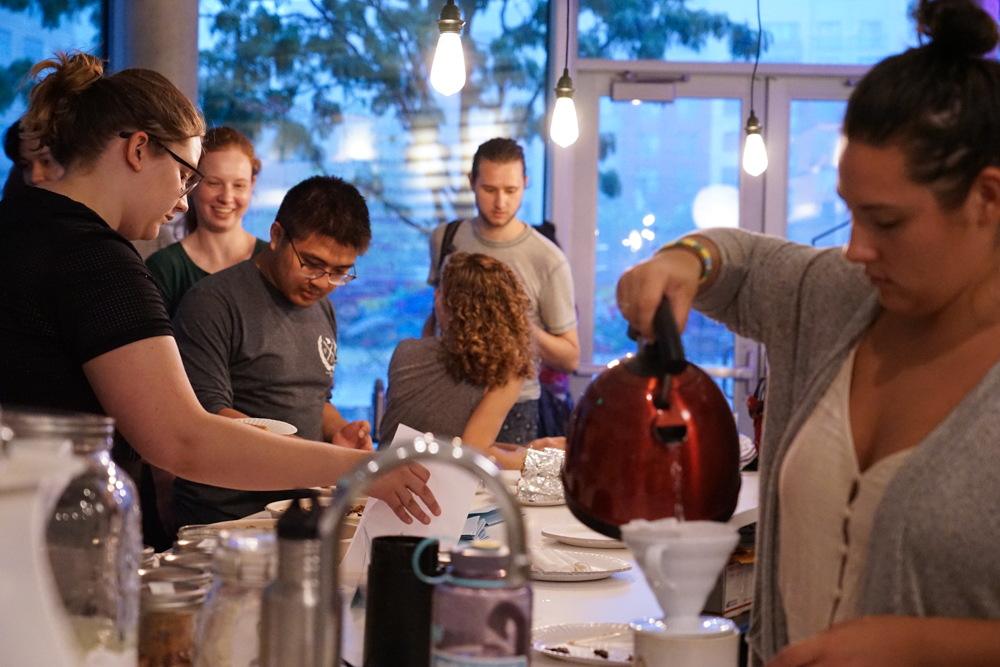
“Studies show that having vacant storefronts decreases quality of life and leads people to move,” he says. Those activated spaces then allow for neighbors to connect, which can decrease loneliness. This is where the “indoor park” comes in—CultureHouse is a place for people to enjoy their neighborhoods and connect even when temperatures drop below freezing and night falls before 5pm.
Johnston-Zimmerman believes a CultureHouse could serve a unique Philadelphian purpose related to livability and equity: leveraging Philly’s already strong civic engagement practices neighborhood by neighborhood.
![]() Local stay-at-home mom Emily Cole heard about the Kendall Square CultureHouse on a local parenting Facebook group, and started a weekly Mommy and Me group that uses the space to connect with other local parents.
Local stay-at-home mom Emily Cole heard about the Kendall Square CultureHouse on a local parenting Facebook group, and started a weekly Mommy and Me group that uses the space to connect with other local parents.
She says the proximity to a T stop, the free coffee, the couch setup and the warmth made it an easy choice of location. Additionally, because the space isn’t overly crowded in the way that many local coffee shops can be, finding space to park strollers isn’t a logistical mothering nightmare.
By removing the barrier to entry that comes with a $5 coffee at cafés or an $8 beer at breweries, CultureHouse ensures this increased livability and joy is available to all Bostonians.
“Oftentimes access to public spaces can be very limited or tied to socio-economic status or to race in some cities. Not having access to those spaces can be detrimental,” explains Greiner. “By removing that financial barrier to entry, you can create spaces that are more equitable.”
2. Community development
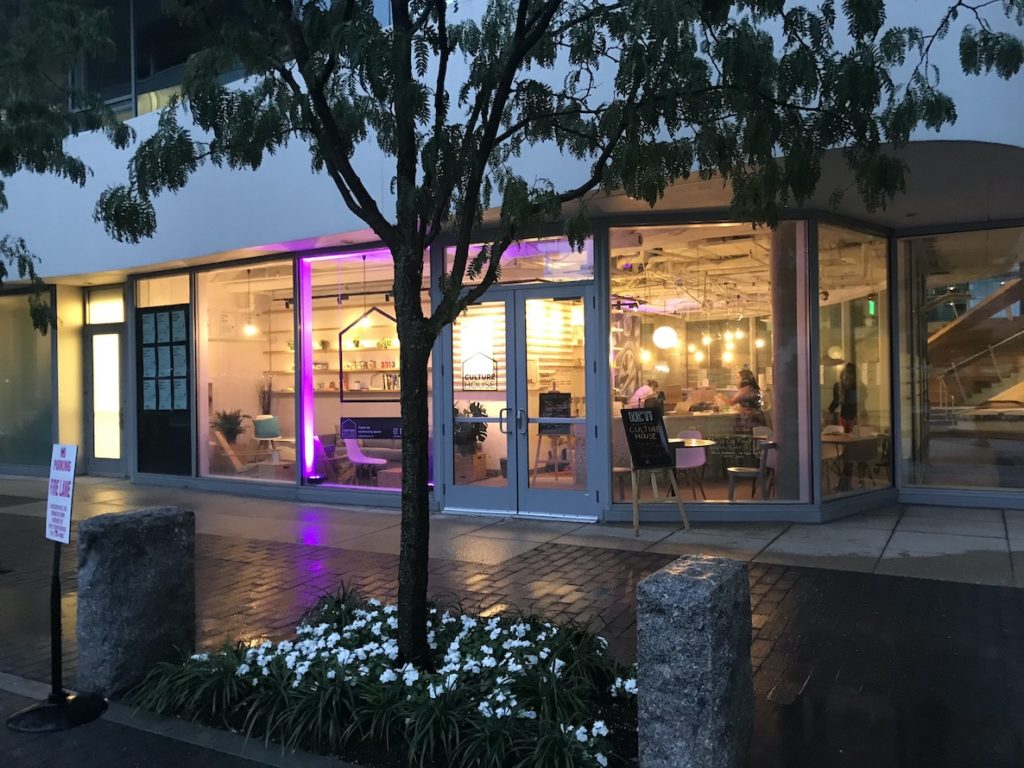
The second impact is community development—not by developing buildings, but by building a stronger sense of community. “Having vacancies can create social stigmas around communities,” Greiner explains. “By activating those spaces, we’re reversing that trend and allowing for a strong local identity. It creates a space that is an anchor, a focal point, a center for that development.”
3. Economic activity
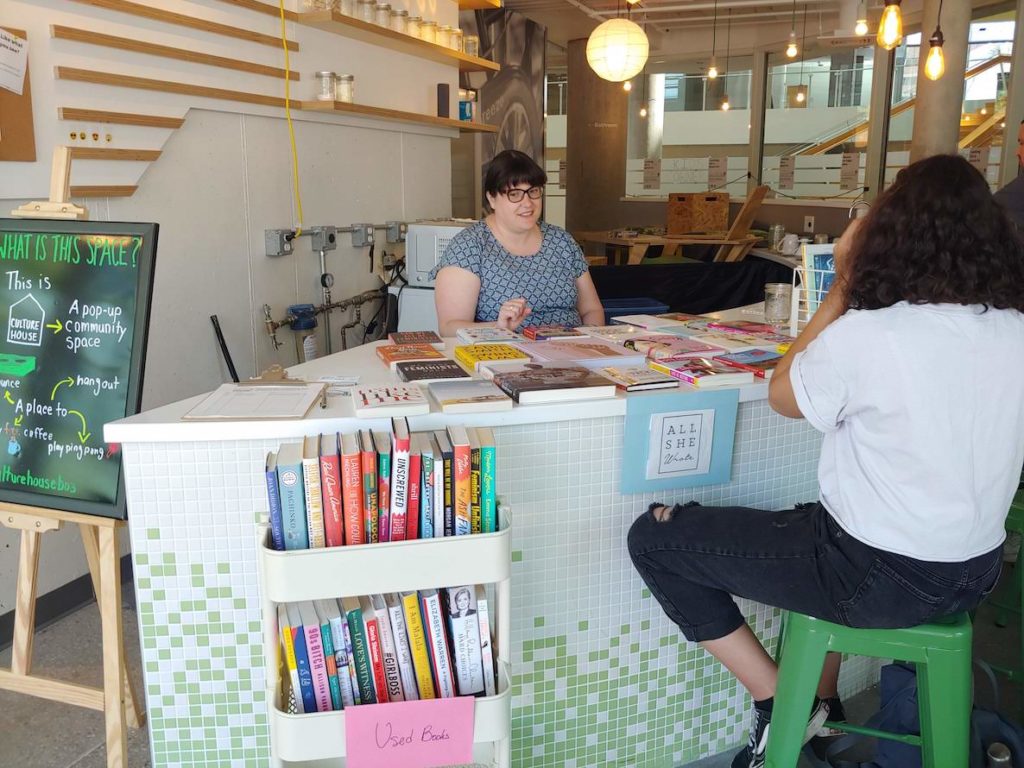
“When you have storefronts that are not active, people are less likely to go there and spend money. By creating a reason to come and a reason to stay, it helps increase local business in those surrounding stores,” says Greiner.
Because CultureHouse doesn’t sell anything and only offers coffee and tea, visitors often buy lunch from nearby businesses, and, since they’re already in the area, may swing by nearby retail stores. (In Philly, Itzkowitz says he has one caveat for an Old City CultureHouse to ensure it really does boost economic activity: It definitely cannot serve coffee and tea, given so many coffee shops exist in the neighborhood.)
Greiner says the “ghost of CultureHouse” has left its mark on the neighborhood: In Bow Market, the owner asked him to leave behind some of the furniture so people could continue to use the space, which they do to this day.
Of course, creating a new space such as CultureHouse, meant to draw people to an area, also has the potential to inadvertently contribute to gentrification. Greiner says that to combat this, they reach out to community members prior to activating a space in a neighborhood. “We’re talking to residents, to all of the stakeholders we can, to make sure what we’re doing is wanted and needed,” he explains. “If it’s not, you’re just coming in and saying what they want.”
After the Kendall Square pop-up opened—which is in a traditionally 9-to-5 work area of Cambridge, and thus is quite empty on evenings and weekends—the CultureHouse team documented a two-fold increase in the number of people who stopped in the area on weekdays, and an eight-fold increase on weekends.
This drawing of people to the area is a major selling point when CultureHouse approaches property managers or owners about activating vacant spaces. They need this selling point, because a central tenet of their funding model is that they do not pay rent.
While this was a challenge when they first got started and were looking for property owners who would trust their vision, justifying it has become much easier as they have established a track record of increasing foot traffic. In fact, for both the Kendall Square location and the upcoming Harvard Square pop-up, interested parties approached them to ask them to activate spaces, and at Kendall Square, property owner BioMed Realty even pays for portions of CultureHouse programming.
![]() Other funding for the operation—which can vary, but costs around $10,000 a month, including design and community engagement costs—comes from grants and donations, with particularly large support coming from the Forest Foundation.
Other funding for the operation—which can vary, but costs around $10,000 a month, including design and community engagement costs—comes from grants and donations, with particularly large support coming from the Forest Foundation.
BioMed Realty Community Manager Andrea Windhausen says CultureHouse’s ability to draw people in quickly became clear. “Since partnering with CultureHouse, they have become a huge draw in Kendall Square and have surprised us all with the evening and weekend crowds,” she says.
CultureHouse was supposed to shut its doors in Kendall Square in October, but BioMed was so pleased with the impact that they asked them to extend their time through March.
While the idea behind CultureHouse is very new to the United States, Greiner found an abundance of indoor public spaces—and the initial inspiration for this venture—in Copenhagen while studying urban design there in 2017.
Copenhagen’s climate is similar to Boston’s, but the city didn’t allow the weather to curb their community interaction in the way U.S. cities do. “They’re cities where people can’t live life because it’s cold out and dark. But in Copenhagen, there’s such vibrancy despite the cold and lack of sunlight. There’s such a strong sense of community,” says Greiner. “A lot of that was due to the fact that there are a lot of public spaces there.”
Greiner returned to the U.S. and worked for a summer for Better Block, an urban design organization that temporarily transforms underused city areas into vibrant outdoor destinations. Greiner returned to his hometown of Boston for his final year of school at Olin College of Engineering and started to think about how he could apply the inspiration he had found in Copenhagen and Better Block to his hometown, where a “severe lack of public spaces” and an abundance of vacant storefronts created a unique opportunity to do something about both.
CultureHouse Community Manager Allie Girouard says each space is designed intentionally to communicate that all are welcome inside. “In an area like Kendall Square, the glass and steel ‘pristine’ architecture is foreboding. It doesn’t feel like somewhere most people are allowed to be—if you’re not a wealthy biotech worker, it can feel like you are in the way,” she explains. “By contrast, we have a lot of homemade wooden furniture as well as swings and used board games and plants. It’s the kind of stuff you might have at your house—so it’s the kind of space where you don’t feel like you have to police your every move.”
The unusual or challenging-to-work-with aspects of a space, though, are often the best part of activating a new space. “No one has a beautifully white-walled, ready-for-you-to-move-in empty storefront. There is usually a giant bar or something in the middle,” laughs Greiner. “There’s a lot of funkiness going on. But we like to work with that. It provides helpful restraints that help us to work through the character of the space.”
“If you’re really thinking about local change and culture, why not have these in a host of neighborhoods across the city that are really community-led and can be a hub of thinking about change?”
The one-month pilot in Union Square allowed the team to show people what CultureHouse, a rather nebulous idea to many, could actually look like, and to prove that it could draw people to an area. They didn’t track data prior to the space’s opening, and so couldn’t quantify its subsequent impact. But anecdotally, Greiner says, the “ghost of CultureHouse” has left its mark on the neighborhood: In Bow Market, the owner asked him to leave behind some of the furniture so people could continue to use the space, which they do to this day.
Now that CultureHouse has a proven track record in the Boston area, interested parties from cities ranging from Chicago to New York have reached out to Greiner for advice on making it happen locally. Back in Philadelphia, Itzkowitz believes Old City is a logical location for something like CultureHouse due to the neighborhood’s age.
The residential buildings are old and so lack the community spaces that newer apartment buildings often have. The storefronts are also old, which can impact their desirability to business owners. “Old Old City buildings can be 20 feet wide but 100 feet deep,” Itzkowitz explains. “Someone who can use it more creatively is always attractive.”
And both Old City and South Street both have vacancy rates of just over 10 percent, though South Street’s rate is as high as 35 percent on some blocks.
And then, there’s also just that Old City is old—which also means it’s a neighborhood of firsts. “The country was founded in the neighborhood and I think there’s always an opportunity here to be creative and try something new,” explains Itkowitz. “I think there’s a welcoming environment for that here.”
Want more? Check out these related stories:
- Shift Capital may be just what Kensington needs for community regeneration
- City composting pilot to make good use out of Philadelphia’s food waste
- Boathouse Row café works to help people with disabilities find good jobs
Photo courtesy Nur Shlapobersky



